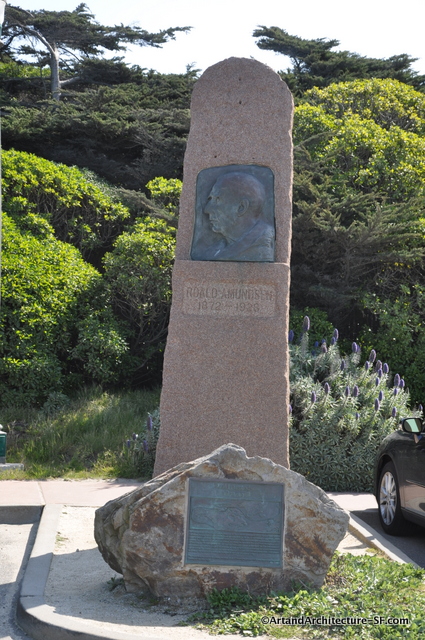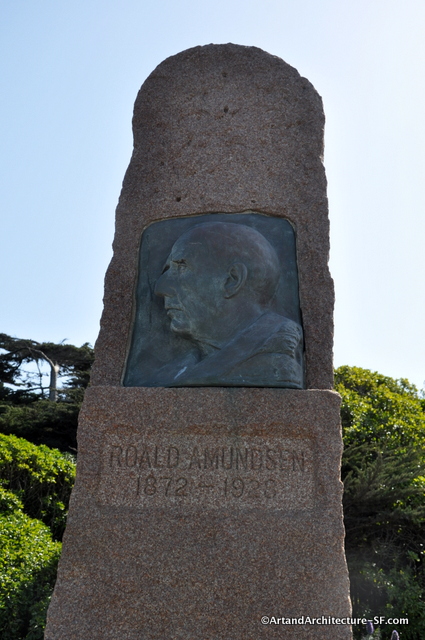1000 The Great Highway
This memorial sits in the parking lot of the Beach Chalet, it has been there since 1930. It marks where Amundsen’s ship, the Gjoa (pronounced “Joe”) was in dry-dock. It had been pulled ashore here in 1909, and placed on dry-dock display. Amundsen donated the ship and the Norweigan community took up a collection to display the ship in the park. Unfortunately, the ship had a rough time and had fallen into disrepair by the 1930s due to vandalism and the elements. The Gjoa Foundation was formed in 1940 to restore her but was thwarted by the outbreak of WWII. A restoration took place in 1949, but a sever gale in 1960 toppled the uppermost part of the mast, and by 1970, years of neglect had taken their toll. In 1972 she was hauled to Pier 48, loaded on a freighter and sent to Oslo, Norway, where she was lovingly resorted and draws thousands of visitors a year.
Roald Amundsen was one of the world’s most important explorers. Between 1903 and 1906 his crew were the first to navigate successfully the Northwest passage, from the Atlantic to the Pacific. Along the way Amundsen’s expedition had determined the position of the Magnetic North Pole. And the epic adventure was completed when his 69-foot sailing ship entered San Francisco in 1906. Its arrival was greeted with great celebration and acclaim.
Amundsen later became the first to reach the South Pole, in a larger ship, the Fram, and he was quite a successful lecturer and writer. His scientific contributions and adventures are graphically recounted in such books as the North West Passage (1908), The South Pole (1912), The North East Passage (1918 -1920), Our Polar Flight (1925), First Crossing of the Polar Sea (1927), and My Life As An Explorer (1927) It’s the Northwest Passage journey of the Gjoa, however, that connects Amundsen to San Francisco.
The sculptor was Hans Jauchen, born in Hamburg, Germany of Danish parents who were famous artists themselves. He immigrated to the US in 1910 and began teaching at Stanford, UC Berkeley and other institutions. His studio – Ye Olde Copper Shop – on Sutter street, provided sculpture services, and ornamental bronze and iron works. One of his most notable works is an altar depicting scenes in the life of Christ, commissioned by financier J. Pierpont Morgan, Jr. for his London home.

